I may be a little late to the discussion, but I found this thread recently as I struggled to implement ZCA in TensorFlow because my poor PC processor was too slow to process large volume of data.
If anyone is interested, I have made a gist of my implementation of the ZCA in TensorFlow:
import tensorflow as tf
from keras.datasets import mnist
import numpy as np
tf.enable_eager_execution()
assert tf.executing_eagerly()
class ZCA(object):
"""
Simple ZCA aka Mahalanobis transformation class made in TensorFlow.
The code was largely ported from Keras ImageDataGenerator
"""
def __init__(self, epsilon=1e-5, dtype='float64'):
"""epsilon is the normalization constant, dtype refers to the data type used in the computation.
WARNING: the default precision is set to float64 as i have found that when computing the mean tensorflow'
and numpy results can differ by a substantial amount.
Usage: fit method computes the principal components and should be called first,
compute method returns the actual transformed tensor
NOTE : The input to both methods must be a 4D tensor.
"""
assert dtype is 'float32' or 'float64', "precision must be float32 or float64"
self.epsilon = epsilon
self.dtype = dtype
self.princ_comp = None
self.mean = None
def _featurewise_center(self, images_tensor):
if self.mean is None:
self.mean, _ = tf.nn.moments(images_tensor, axes=(0, 1, 2))
broadcast_shape = [1, 1, 1]
broadcast_shape[2] = images_tensor.shape[3]
self.mean = tf.reshape(self.mean, broadcast_shape)
norm_images = tf.subtract(images_tensor, self.mean)
return norm_images
def fit(self, images_tensor):
assert images_tensor.shape[3], "The input should be a 4D tensor"
if images_tensor.dtype is not self.dtype: # numerical error for float32
images_tensor = tf.cast(images_tensor, self.dtype)
images_tensor = self._featurewise_center(images_tensor)
flat = tf.reshape(images_tensor, (-1, np.prod(images_tensor.shape[1:].as_list())))
sigma = tf.div(tf.matmul(tf.transpose(flat), flat), tf.cast(flat.shape[0], self.dtype))
s, u, _ = tf.svd(sigma)
s_inv = tf.div(tf.cast(1, self.dtype), (tf.sqrt(tf.add(s[tf.newaxis], self.epsilon))))
self.princ_comp = tf.matmul(tf.multiply(u, s_inv), tf.transpose(u))
def compute(self, images_tensor):
assert images_tensor.shape[3], "The input should be a 4D tensor"
assert self.princ_comp is not None, "Fit method should be called first"
if images_tensor.dtype is not self.dtype:
images_tensor = tf.cast(images_tensor, self.dtype)
images_tensors = self._featurewise_center(images_tensor)
flatx = tf.cast(tf.reshape(images_tensors, (-1, np.prod(images_tensors.shape[1:]))), self.dtype)
whitex = tf.matmul(flatx, self.princ_comp)
x = tf.reshape(whitex, images_tensors.shape)
return x
def main():
import matplotlib.pyplot as plt
train_set, test_set = mnist.load_data()
x_train, y_train = train_set
zca1 = ZCA(epsilon=1e-5, dtype='float64')
# input should be a 4D tensor
x_train = x_train.reshape(*x_train.shape, 1)
zca1.fit(x_train)
x_train_transf = zca1.compute(x_train)
# reshaping to 28*28 and casting to uint8 for plotting
x_train_transf = tf.reshape(x_train_transf, x_train_transf.shape[0:3])
fig, axes = plt.subplots(3, 3)
for i, ax in enumerate(axes.flat):
# Plot image.
ax.imshow(x_train_transf[i],
cmap='binary'
)
xlabel = "True: %d" % y_train[i]
ax.set_xlabel(xlabel)
ax.set_xticks([])
ax.set_yticks([])
plt.show()
if __name__ == '__main__':
main()
I know this isn't a proper answer to the original question, but still it may be useful to anyone who is looking for a GPU implementation of ZCA but couldn't find one.

